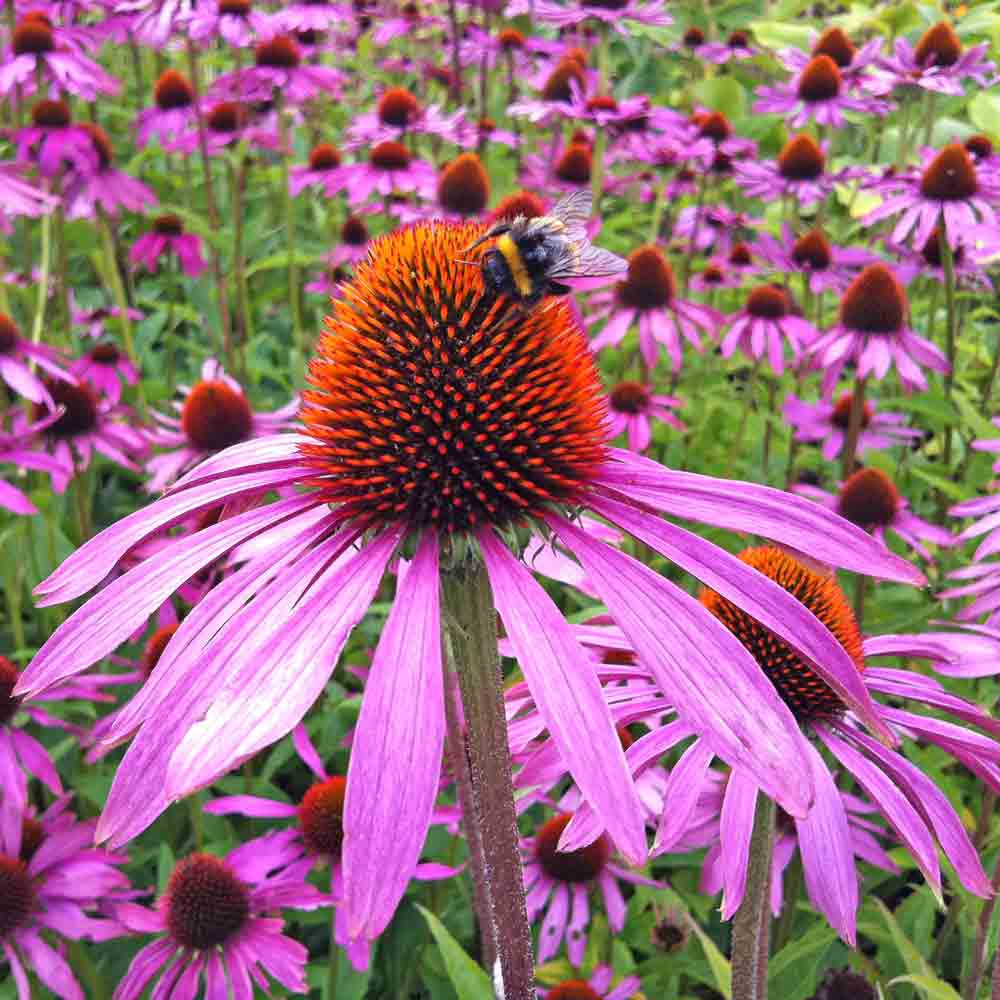

Place in your fridge for 60 days checking half way through to see if you need to add a little more water. You want your medium moist but not soggy. When cold treating place your seeds in a baggies with a cup of peat or sand and add 1/4 cup of water. You can also start these early in pots, but if starting early you will need to cold treat them. These need light to germinate so sow on the surface and lightly dust with peat or compost. Good for zones 3-12 Coneflower are best direct seeded after your first frost in the fall. We offer flat rate combined shipping on all orders, no limit on the amount or type of seed packets. These heirloom coneflowers are very easy to sow and create lavender petals on 36" stems. Visit to find a native nursery in your area.Up for sale is one pack of 300 Purple Coneflower seeds (Echinacea purpurea). Purple coneflower is often available at nurseries that specialize in native plants. It is best to purchase seeds or plants from a local grower.

Big box stores typically obtain their plants from out-of-state stock, and those plants don’t do as well here as plants grown from Florida stock. Note: When buying purple coneflower, be sure you are buying Florida stock. Includes seed pellets with purple coneflower seeds to cover 15 sq. You simply drop them on the ground, add water and let nature do the rest. It is drought-tolerant and doesn’t require a lot in the way of maintenance. Product Description: Sprinkle some bright blossoms throughout your garden with these inconspicuous pellets. Garden tips: Purple coneflower is easily propagated by seeds or division and does well in almost any garden setting. Echin is Latin for spiny or prickly, and the word ekhinos is Greek for sea urchin or. In fact it’s the prickly spikes of its conical seedhead that give this wildflower its scientific name. The soft, elegant lines of the rays provide a stunning contrast to its hard, spikey cone. Soil: Well-drained sand, clay or loamy soil Purple coneflower has always been a favorite of mine. The link below has a close up shot of the seeds. The dark spiky stuff is what holds the seeds on the head. To see where natural populations of purple coneflower have been vouchered, visit . No, the straw colored things are the seeds. Also used in teas to support a healthy immune system. Purple coneflower (Echinacea purpurea) by Eleanor Dietrichįamily: Asteraceae (Aster, daisy or composite family) Striking 3 rose-purple flowers with an attractive center that adds interest to dried arrangements. The seeds will fall off and can be stored for next year once they are completely dried. You can harvest them by cutting the stalk and hanging the browned flower upside down, wrapping the flower part in a brown bag. Purple coneflower is an endangered Florida native wildflower, found naturally only in Gadsden County. You can also grow purple coneflower from the seeds that result once the flower is spent. Thin the seedlings after germination so the plants are 12 to 18 inches apart in all directions. Cover the seeds with 1/4 to 1/2 inch of soil, because they wont sprout if light reaches them.
Purple coneflower seed full#
The nectar of purple coneflower attracts a variety of butterflies, bees and even hummingbirds, while its seeds are eaten by birds and other wildlife. When planting coneflower seeds outdoors, choose a well-draining garden bed thats in full sun. The leaves are dark green with toothed margins and a rough surface. They form on erect stems that emerge from a basal rosette of sagittate to lanceolate leaves. The striking bloom of the Purple coneflower ( Echinacea purpurea) consists of a compact center of disk florets that range in color from green to yellow-orange to brown, surrounded by long lavender to purple ray florets. Click on terms for botanical definitions. Pictured above: Purple coneflower ( Echinacea purpurea) by Travis Mitchell.


 0 kommentar(er)
0 kommentar(er)
